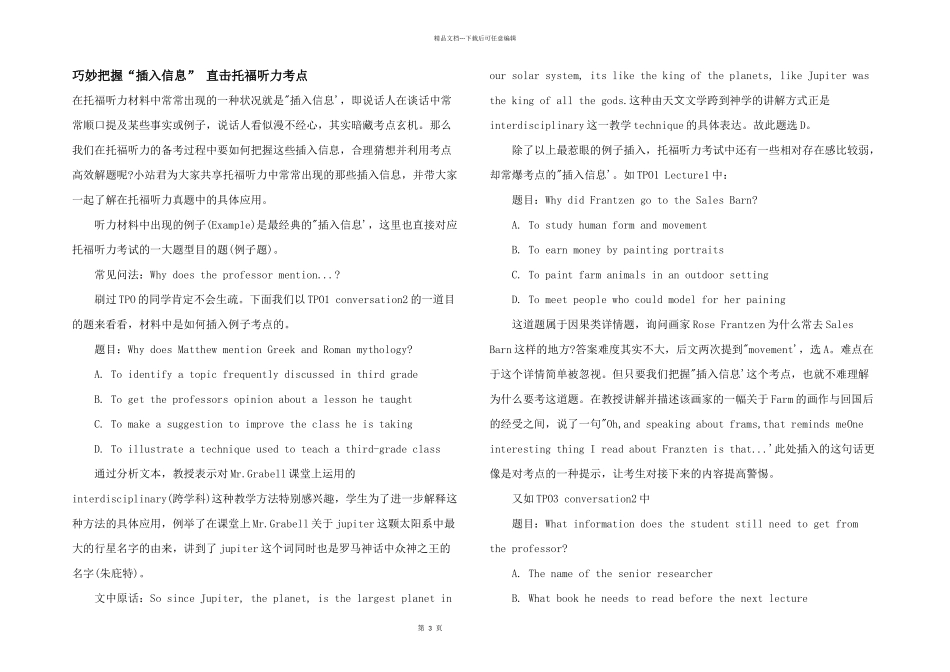第 3 页精品文档---下载后可任意编辑巧妙把握“插入信息” 直击托福听力考点在托福听力材料中常常出现的一种状况就是"插入信息',即说话人在谈话中常常顺口提及某些事实或例子,说话人看似漫不经心,其实暗藏考点玄机。那么我们在托福听力的备考过程中要如何把握这些插入信息,合理猜想并利用考点高效解题呢?小站君为大家共享托福听力中常常出现的那些插入信息,并带大家一起了解在托福听力真题中的具体应用。 听力材料中出现的例子(Example)是最经典的"插入信息',这里也直接对应托福听力考试的一大题型目的题(例子题)。 常见问法:Why does the professor mention...? 刷过 TPO 的同学肯定不会生疏。下面我们以 TPO1 conversation2 的一道目的题来看看,材料中是如何插入例子考点的。 题目:Why does Matthew mention Greek and Roman mythology? A. To identify a topic frequently discussed in third grade B. To get the professors opinion about a lesson he taught C. To make a suggestion to improve the class he is taking D. To illustrate a technique used to teach a third-grade class 通过分析文本,教授表示对 Mr.Grabell 课堂上运用的interdisciplinary(跨学科)这种教学方法特别感兴趣,学生为了进一步解释这种方法的具体应用,例举了在课堂上 Mr.Grabell 关于 jupiter 这颗太阳系中最大的行星名字的由来,讲到了 jupiter 这个词同时也是罗马神话中众神之王的名字(朱庇特)。 文中原话:So since Jupiter, the planet, is the largest planet in our solar system, its like the king of the planets, like Jupiter was the king of all the gods.这种由天文学跨到神学的讲解方式正是⽂interdisciplinary 这一教学 technique 的具体表达。故此题选 D。 除了以上最惹眼的例子插入,托福听力考试中还有一些相对存在感比较弱,却常爆考点的"插入信息'。如 TPO1 Lecture1 中: 题目:Why did Frantzen go to the Sales Barn? A. To study human form and movement B. To earn money by painting portraits C. To paint farm animals in an outdoor setting D. To meet people who could model for her paining 这道题属于因果类详情题,询问画家 Rose Frantzen ...

